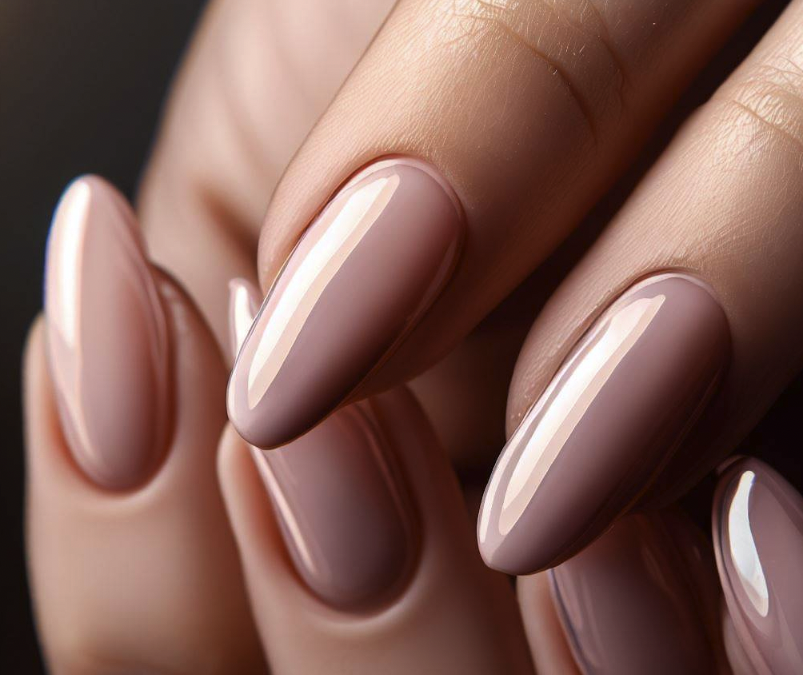Our nails can provide valuable insights into our overall health. Changes in their appearance, such as vertical ridges or lines, can often be a cause for concern.
Many people wonder if these ridges indicate a vitamin deficiency.
Here we look at the relationship between vertical ridges on nails and vitamin deficiency, backed by research and expert opinions.
Understanding Vertical Ridges on Nails
Vertical ridges on nails are often referred to as longitudinal striations.
They appear as raised lines running from the cuticle to the tip of the nail.
These ridges can vary in depth, width, and color.
While vertical ridges are generally harmless, they can sometimes be a sign of an underlying health issue.
The Role of Vitamins in Nail Health
Vitamins play a vital role in maintaining healthy nails.
Deficiencies in certain vitamins can lead to changes in nail appearance.
However, it is important to note that vertical ridges on nails are not always directly linked to vitamin deficiencies.
Vitamin A
Vitamin A is essential for the growth and development of cells, including those that make up our nails.
A deficiency in vitamin A can result in brittle nails that are prone to breakage. However, vertical ridges are not typically associated with vitamin A deficiency.
Vitamin B
The B-vitamin complex, including biotin (B7), plays a significant role in nail health.
Biotin deficiency can lead to brittle nails and may cause horizontal ridges, known as Beau’s lines. However, vertical ridges are not commonly associated with biotin deficiency.
Vitamin C
Vitamin C is crucial for collagen production, which is essential for maintaining strong and healthy nails.
A deficiency in vitamin C can lead to brittle nails that are prone to ridges and other abnormalities. However, vertical ridges alone are not typically indicative of vitamin C deficiency.
Vitamin D
Vitamin D is important for overall bone health, including the nails. A deficiency in vitamin D can lead to weak and brittle nails.
However, vertical ridges are not commonly associated with vitamin D deficiency.
Other Factors Contributing to Vertical Ridges
While vitamin deficiencies may not be the primary cause of vertical ridges on nails, there are other factors that can contribute to their appearance:
- Aging: Vertical ridges on nails are more common as we age. They are often a natural part of the aging process and not necessarily indicative of any health issues.
- Genetics: Some individuals may be genetically predisposed to developing vertical ridges on their nails.
- Injury: Trauma or injury to the nail bed can cause vertical ridges to form temporarily. These ridges usually grow out as the nail regenerates.
- Nail Care Habits: Certain nail care practices, such as excessive filing or using harsh chemicals, can weaken the nails and contribute to the formation of ridges.
When to Seek Medical Attention
While vertical ridges on nails are often harmless, there are instances where they may indicate an underlying health issue.
It is important to consult a healthcare professional if you notice any of the following:
- Changes in nail color, shape, or texture
- Horizontal ridges or depressions on the nails
- Pain, swelling, or inflammation around the nails
- Significant changes in nail growth patterns
Nail Ridges: The Silent Signaling Your Nails Are Trying to Tell You
FAQ – Vertical Ridges (Lines) on Nails – Vitamin Deficiency?
1. Can vertical ridges on nails be a sign of vitamin deficiency?
While vertical ridges on nails can be associated with certain vitamin deficiencies, they are not typically the primary cause.
2. Which vitamins are commonly linked to nail health?
Vitamins such as A, B, C, and D play a role in maintaining healthy nails.
3. Can vitamin A deficiency cause vertical ridges on nails?
No, vertical ridges on nails are not commonly associated with vitamin A deficiency.
4. Can biotin deficiency cause vertical ridges on nails?
No, vertical ridges on nails are not commonly associated with biotin deficiency.
5. Can vitamin C deficiency cause vertical ridges on nails?
While vitamin C deficiency can lead to brittle nails, vertical ridges alone are not typically indicative of this deficiency.
6. Can vitamin D deficiency cause vertical ridges on nails?
No, vertical ridges on nails are not commonly associated with vitamin D deficiency.
7. Are vertical ridges on nails a normal part of aging?
Yes, vertical ridges on nails are more common as we age and are often a natural part of the aging process.
8. Can trauma or injury to the nail bed cause vertical ridges?
Yes, trauma or injury to the nail bed can cause temporary vertical ridges that usually grow out as the nail regenerates.
9. Can excessive filing or harsh chemicals weaken the nails and contribute to ridges?
Yes, certain nail care practices can weaken the nails and contribute to the formation of ridges.
10. When should I seek medical attention for vertical ridges on my nails?
You should consult a healthcare professional if you notice changes in nail color, shape, texture, horizontal ridges, pain, swelling, inflammation, or significant changes in nail growth patterns.
11. Are vertical ridges on nails always a cause for concern?
No, vertical ridges on nails are often harmless.
However, it is important to monitor any changes and seek medical attention if necessary.
12. Can vertical ridges on nails be a sign of a serious health condition?
In some cases, vertical ridges on nails may indicate an underlying health issue.
It is important to consult a healthcare professional for proper evaluation and diagnosis.
13. Can a healthy diet improve the appearance of vertical ridges on nails?
A balanced diet rich in essential vitamins and minerals can contribute to overall nail health.
However, it may not directly eliminate vertical ridges.
14. Can supplements help improve the appearance of vertical ridges on nails?
Supplements should be taken under the guidance of a healthcare professional.
While they may support overall nail health, their effectiveness in eliminating vertical ridges is not guaranteed.
15. Can vertical ridges on nails be prevented?
While some factors contributing to vertical ridges, such as aging and genetics, cannot be prevented, maintaining good nail care habits and a balanced diet can help promote healthy nails.
Summary
Vertical ridges on nails are a common concern for many individuals.
While they are not typically indicative of a vitamin deficiency, certain deficiencies can contribute to changes in nail appearance.
Vertical ridges are often a natural part of the aging process or can be influenced by genetics, injury, or nail care habits.
It is important to monitor any changes in nail health and seek medical attention if necessary.
A balanced diet and good nail care practices can help promote overall nail health, but may not directly eliminate vertical ridges.


